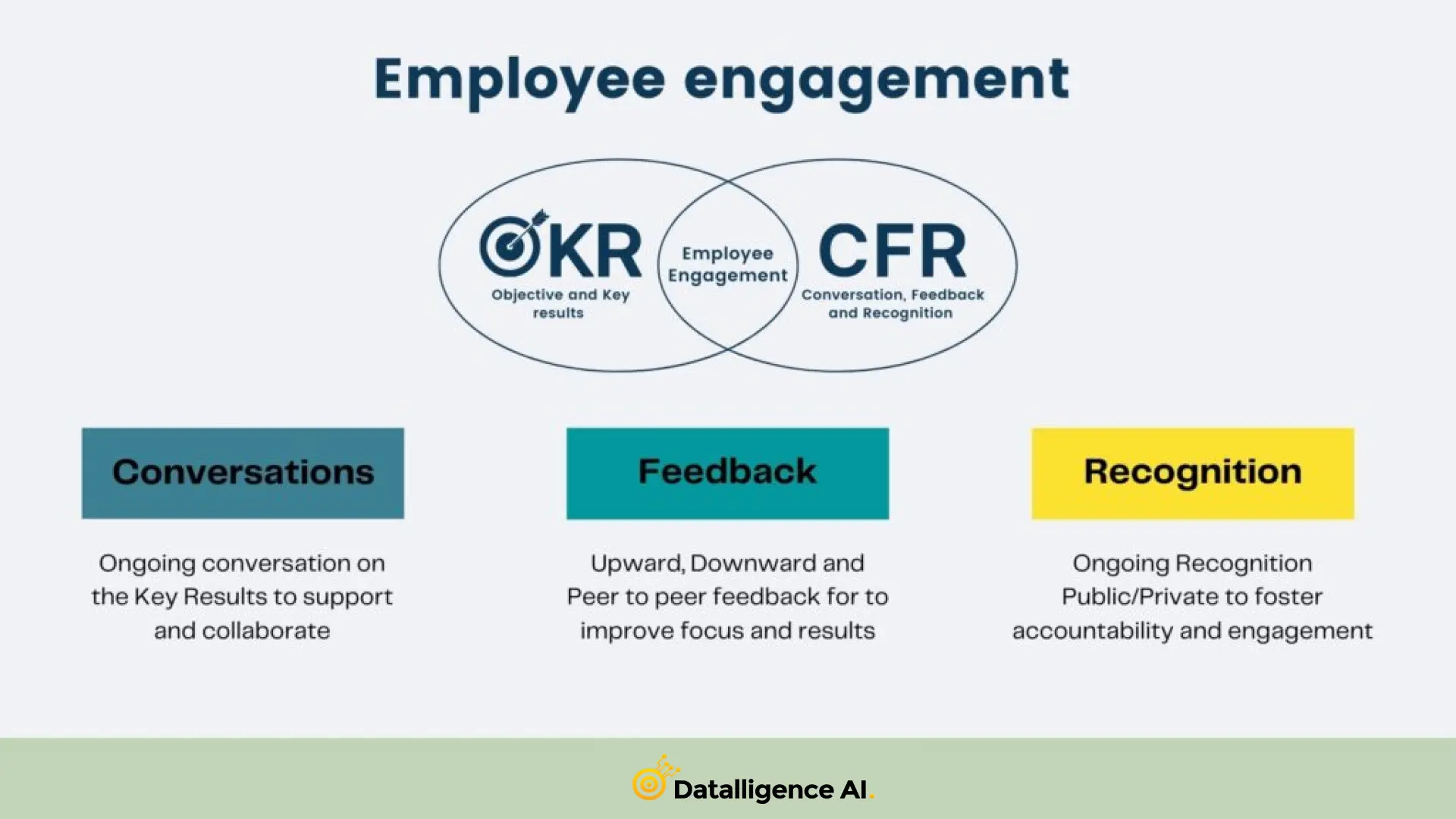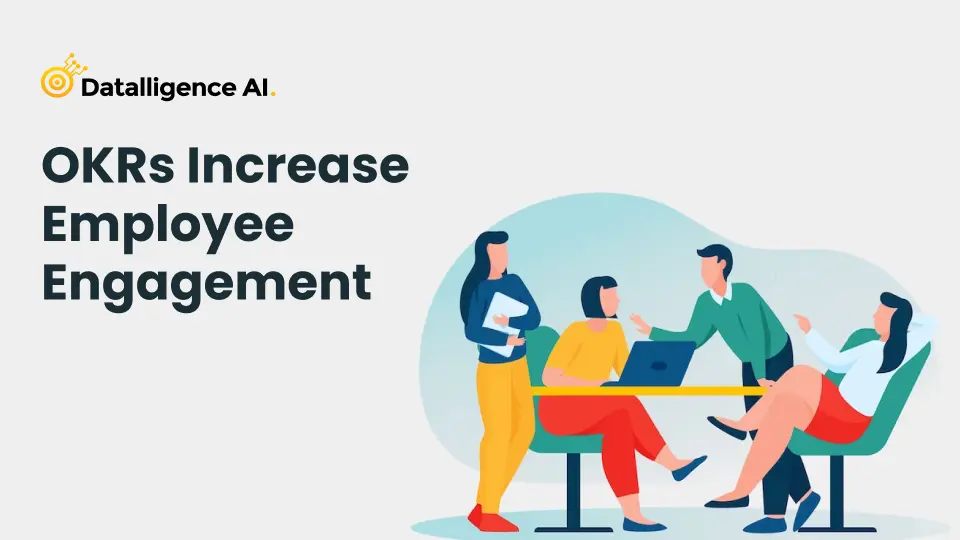“When people are financially invested, they want a return. When people are emotionally invested, they want to contribute.”
– Simon Sinek
A company is nothing but an institution that has been formed by bringing together a group of people so they can accomplish something that cannot be achieved by them individually. This is the best definition of the company there ever is. The core of this statement was verbalized by the late David Packard, who was the co-founder of “Hewlett-Packard.” But what happens when such a formed institution of people is disinterested or not fully committed to the goal? Nothing productive! And these might not even be because of the employee’s problem but a result of a faulty management system. Fortunately, OKR software holds the answers to the employee engagement puzzle, and these answers are factual, as they are proven by the success of companies like “Google.”
Read through to know more about employee engagement and how OKR increases employee engagement.
Three different types of employee
Depending on luck or maybe conscious effort, your company’s employees will fall under any of the three types: Engaged, Not Engaged, or Disengaged. Employees of every company fall under any of these three dimensions. But how do you tell the type?
1. Engaged
These employees are the cream of the crop, whom you want in your company. Your employees are like causes in the Pareto principle or the 80/20 rule, according to which 80% of work is done by 20% of causes. An engaged employee is a motivated employee who is the cause for development that happens in a company, according to empirical evidence.
2. Not Engaged
If your company has more than ten people, chances are your environment has more potential to have employees who are not engaged or motivated toward your company’s goals. The majority of the workers in larger companies are not engaged. They are just blind moving forward toward the salary date from one month to the next.
3. Actively disengaged
These are also employees who are moving from salary date to salary date, but this group is more susceptible to spreading negativity in your company because of their disenchanted background or disgruntled current state. And what is worse is that these employee attitudes may have been caused by your company or, to be precise, your ill-informed management process.

How does OKR increase your employee engagement?
If the disarray of employee engagement is the fault of your company or even because of the forces outside your company’s control, with a well-woven management system like OKR (Objective and Key Results), you can definitely increase or fix your employee engagement. Following are three popular ways among many others that OKR software/methodology increases employee engagement.
1. Inform what why and how
Pleasure and happiness are two very different things. The former is rooted down to come from freedom and the latter from meaning. Freedom does not go by definite or absolute, sadly! And we need absolutes to give us meaning. The study says that the pursuit of meaning is more consistent than the pursuit because of freedom. Therefore employees who know their company’s goals and the reason behind those goals, and the path drawn out to achieve those goals are motivated enough by the closure to work towards it in an engaging manner. And if the company’s goal aligns with its own goal at work while also being capable of giving them value in some sense, then employees are ready to go above and beyond to achieve it. This is why Object and Key Results are a successful practice, as it not only informs what the goal is but makes employees understand why the goal was put in place and also how to achieve it (the criteria) through its “Key results.”
2. Enable communication
Another benefit that Objective and Key Results bring to the table is effective communication among employees, among teams, and between employees and leaders. The one-on-one interactions are crucial, as each employee is unique and has their own specialties and challenges. Interacting individually with them can show a lot of progress. This is also true about frequent check-in of the OKR status. Feedback is required to be given individually so they can solve the challenges that are unique to them and at the same time make use of their special set of skills for the improvement of the company’s goal. Recognition and appreciation are also part of the effective communication the OKR recommends and invigilates.
3. Break silos
Silos were built by companies so that teams could work autonomously, without any interference. Silos actually have been productive companies in a way. But silos also bring in a lack of transparency between the teams. One team doesn’t know what is happening with the other. This has led to chaos more times than not. With the OKR tracking and feedback system, all teams in your company can know the goals of the different team members and the progression of their goals any time they want. This also creates the opportunity for instant comparison, alignment, and course correction.
To warp it up
Employees are what a company is made of. A group of motivated, engaged employees is the fuel to drive business development. If employee engagement is your company’s issue, then the Objective and Key Results(OKRs) methodology or a program can help you fix or increase the issue pretty easily. From clarity in goals to employee recognition, dedicated OKR software can become a complete management tool. Datalligence has been helping companies set their management process with our OKR software system. Talk to our experts to gain more insights or try Datalligence for “free”










